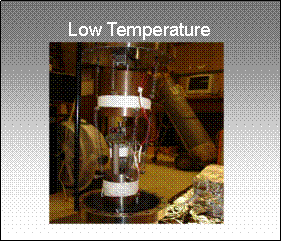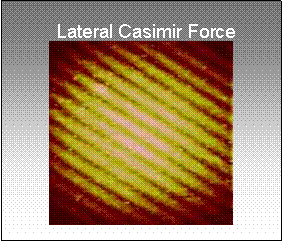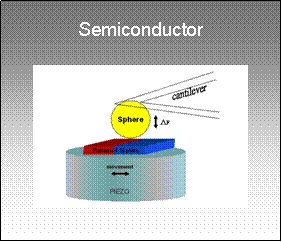

|
The Casimir Effect |




|
Casimir was the first to realize that the bounding of vacuum fluctuations would lead to macroscopic quantum effects. He predicted that the introduction of two neutral parallel metal plates will change the properties of the quantum electromagnetic vacuum, and would result in an attractive force between them. This extraordinary outcome was later theoretically predicted to be even more exotic, with the force being attractive or repulsive depending on the geometry of the boundary. Due to non ideality of boundaries those above for ideal sphere and cubes will be hard to demonstrate. Nevertheless a rich variety of geometry dependences can be still be verified as we have shown.
Sparnaay and 20 years later, Overbeek et al. qualitatively demonstrated the Casimir force. Other measurements of the Casimir force between 1956-1996 were performed with dielectric test bodies for which great ambiguity is introduced due to the large value of uncompensated electrostatic errors. We pioneered the use of the AFM for precision measurements of the Casimir force, which has now become the technique of choice used by almost all major groups for Casimir force measurements and near-field radiative heat transfer worldwide. The key advantages we pioneered were: (i) use of microfabricated cantilevers with a force sensitivity of 10P-14 PN, (ii) use of light and almost ideally smooth polystyrene spheres made from liquid phase (critically important given the problems leading from mechanically polished glass lens being still faced by others), (iii) techniques to independently measure the separation on contact (non zero due to roughness) and the residual potential difference between the surfaces, and (iv) corrections due to finite conductivity of metal and roughness. |